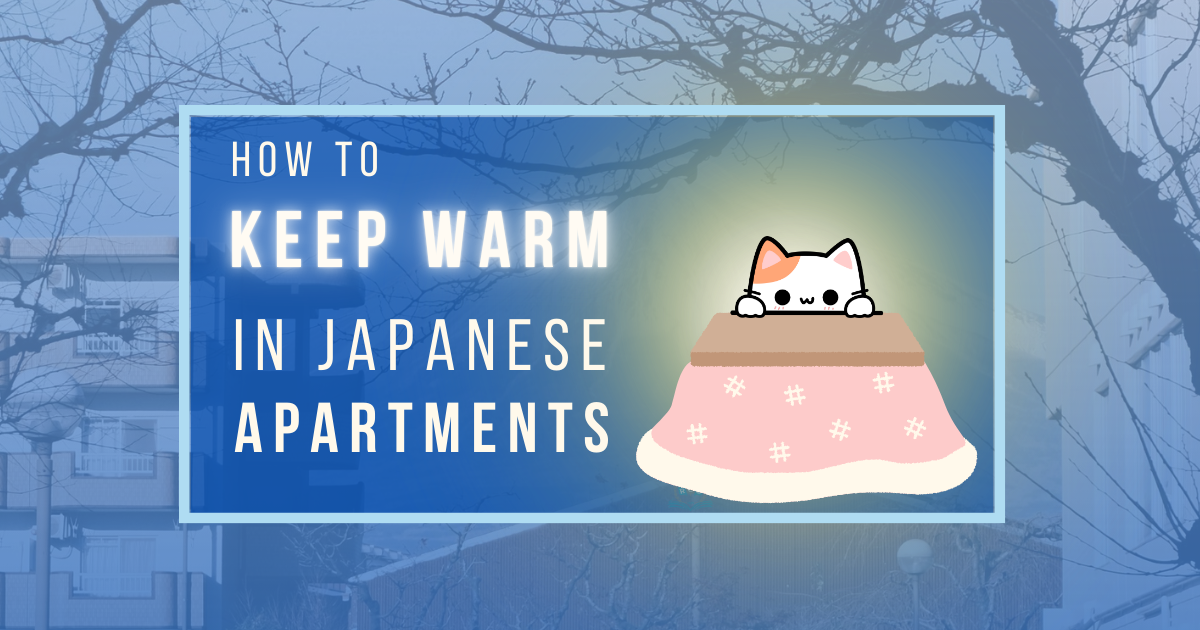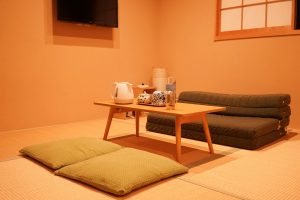

How to Keep Warm in a Japanese Apartment

Japan’s winter season starts in late October and ends in the beginning of March. The cold permeates through Japanese apartments and can go as low as 10 degrees celsius! Here, we will delve into how to keep yourselves warm during the winter in a Japanese apartment.
Why are Japanese apartments so cold?
There are four categories of a Japanese apartment. One is the traditional tatami apartment which can be some of the oldest with little changes from the past 50 or so years. The second are old western apartments built during the 50’s-90’s after the economic boom.
Thirdly are refurbished apartments from these western apartments. They have new amenities such as air conditioning, laundry machine, intercom, and a bidet. This is the most common apartment available to rent in Japan.
Lastly, we come to newly built apartments. These apartments are as young as 10 years old and come with the most amenities.
So, in the case of keeping warm, each apartment style has a different method in order to dredge through the long winter.
Tatami apartments (1900-1950)
Tatami apartments are rare in the city, but these traditional apartments are still available for rent. Mostly made of wood, the insulation is old and outdated, and the cold can impact the wood and cause a draft even when you close the windows. Because of its age, most of them lack an air conditioner and air vents. The best source of heat is a space heater. Many heaters are available for sale at Niitori, secondhand, IKEA, and any furniture store you can think of.
The pro’s of a space heater is that you can easily store it away after winter ends, and requires minimal electricity to use.
Another furniture item is the traditional kotatsu. A kotatsu is a table with a heater built in that creates a comfy atmosphere when a blanket is placed on top. But please be careful as older kotatsu’s have a tendency to overheat. It is advised to buy a new up-to-date kotatsu as they now offer cooling times to not overheat. Like space heaters, the kotatsu consumes less electricity than the standard airconditioner.
Western/Refurbished apartments (1950’s-Today)
These apartments are relatively ‘new’ but still lack radiant heating (a construction of pipes in the floors that supply heat). The best thing you can use is the air conditioner.
Most western apartments now have air conditioners with a heater function. You can set a timer to create a comfy and warm atmosphere in advance.
However, air conditioners consume a lot of electricity. You may see an increase in your electricity bill. Many Japanese people opt out of using the air conditioning unless they want to get warm extremely quickly.
If not, they will also use a space heater and kotatsu as they are small, convenient and cost-effective. Also, is if the apartment has been refurbished, you have an added benefit of a heated toilet seat. Those late-night trips become a lot easier if you know your cheeks will get warm!
Newly built apartments (2000’s-Today)
Newly built apartments, have the most amenities but also are the most expensive. Most newly built apartment complexes have radiant heating, a thermostat and an air conditioner to make the air as warm as possible. However, these are mostly privy to mansion-type apartments (long term stay or bought) as opposed to apartments with short-term leases.
Mansion-type apartment also have a limit on how much you can spend on electricity. But for the most part, your room temperature can stay at a constant 24 degrees for however long you like.
Now that we have established heating for each apartment, let’s look at our options:
How do Japanese people heat their homes?
Space heaters:
You can easily buy a space heater in Japan. Space heaters can be bought at any furniture shop and even Amazon.jp. There are electric space heaters which you plug into an electrical outlet or a gas-based space heater, in which you pour gasoline into a nozzle that powers the heater. A typical heater can cost anywhere from 3,000 yen to 20,000 yen depending on what you are looking for. Another thing to note is that after the winter season comes back to Japan, you will have to clean the heating vents to avoid dust.
Kotatsu:
Kotatsu are a personal favorite because it makes you feel like you are cocooned in the bosom of a giant fluffy cloud. They are dangerous in Japan, as it causes lethargy, laziness and a need to stay inside for as long as possible. You can buy both the table and the blankets at furniture stores or online. There are various types, such as low tables where you sit on the floor, dining tables, square, and round. The price range for a kotatsu can be expensive, charging at 8,000-100,000 yen. These are more of an investment as they can last upwards to 20 years if properly cared for.
Air conditioner
Air conditioners are easy to use. Instead of cold air rushing in, hot air will be emitted and you are set to go. But they can be expensive. The cost of the air conditioner in addition to your current usage will be an increase of 4-6,000 yen.
How do Japanese people stay warm in winter?
If you are someone that feels extreme cold even after all the heating, Japan has the thing for you. You can buy heat packs or heat stickers. Heat packs are little bags of iron, water and sodium acetate. You use these as pocket warmers while outside, but you can use them inside too. Heat stickers are similar, but you can apply these to your back, neck and stomach under your clothes.
• Clothes are another matter to take into if you are prone to chills. Japan has something called HEATTECH. Heatech is thermal inner and outerwear that you can sport every day! You can buy these at UNIQLO and GU for a good price.
• Have a pet.
• Heated/electric blankets are also extremely popular in Japan. You can use it as your bedroom blanket or even as a carpet in your living room. It’s also at a good price point of 6,000-15,000 yen depending on the size.
• Heated carpet. These bad boys can cost from 15,000-20,000 depending on the size.
Overall, the winter is coming soon, so please take care of yourselves, get comfy and have a wonderful winter season!
Looking to change to a new ALT teaching position in Japan in the new year? Apply to join our RCS team here: Link








